 | Thomas Clarke (accountant.) - Arithmetic - 1742 - 152 pages
...Multiplication of Decimal Fractions IS the fame Way performed as Multiplication of Whole Numbers, only point off as many Decimal Places in the Product as there are Decimal Places in both the Multiplicand and Multiplier : As .31875 .002400 .015625 The Operation is... | |
 | James Wood - Algebra - 1815 - 338 pages
...MULTIPLICATION. (38.) To multiply one decimal by another, multiply the figures as in whole numbers, and point off' as many decimal places in the .product as there are in the multiplier and the multiplicand together. = (according to the decimal notation) 235.98. And a similar... | |
 | Warren Colburn - Arithmetic - 1824 - 292 pages
...evident from what we have seen in adding and subtracting decimals, that in this case there must be as many decimal places in the product, as there are in the multiplicand. It may • perhaps be more satisfactory if we analyze it. 7 times 5 thousandths are 35 thousandths,... | |
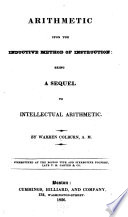 | Warren Colburn - Arithmetic - 1826 - 264 pages
...evident from what we have seen in adding and subtracting decimals, that in this case there must be as many decimal places in the product, as there are in the multiplicand. It may perhaps be more satisfactory if we analyze it. 7 times 5 thousandths are 35 thousandths, that... | |
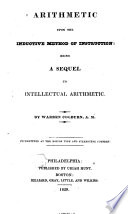 | Warren Colburn - 1829 - 258 pages
...evident from what we have seen in adding and subtracting decimals, that in this case there must be as many decimal places in the product, as there are in the multiplicand. It may perhaps be more satisfactory if we analyze it. 7 'times 5 thousandths are 35 thousandths, that... | |
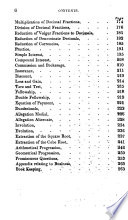 | Charles Davies - Arithmetic - 1833 - 284 pages
...quotient will produce the dividend. But when decimal fractions are multiplied together there will be as many decimal places in the product as there are in the multiplier and multiplicand § 167. Therefore the dividend must contain as many decimal places as the... | |
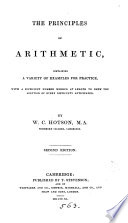 | Wales Christopher Hotson - 1842 - 306 pages
...To find the product of two decimals, orvmixed numbers containing decimals, multiply as in integers, and point off as many decimal places in the product as there arc in both factors. Ex. 1. Find the product of 31.43 and .3, 31.43 x -3 = 9.429. The corresponding... | |
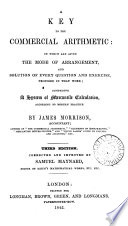 | James Morrison (accountant.) - 1845 - 324 pages
...are necessary to be pointed off? A. I prefix ciphers to make up the deficiency. (3.) Q. Why do you point off as many decimal places in the PRODUCT, as there are in both factors ? A. The reason is, that the operation here is the same as in Multiplication of Vulgar... | |
 | William Vogdes - Arithmetic - 1847 - 324 pages
...you proceed if the product has .lot so many places as are necessary to be pointed off? Q. Why do you point off as many decimal places in the product as there are in both factors ? Q. How do you multiply by 10, 100, 1000, or the like ? DIVISION OF DECIMALS. § 04.... | |
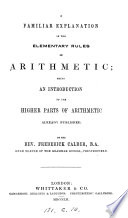 | rev. Frederick Calder - 1852 - 368 pages
...of the principles here stated, we may then work all similar Exs. as in Sim' Mult" of whole numbers, and point off as many decimal places in the product, as there are in all the numbers to be multiplied together. Thus Ex. I. would have been commonly worked as follows;... | |
| |